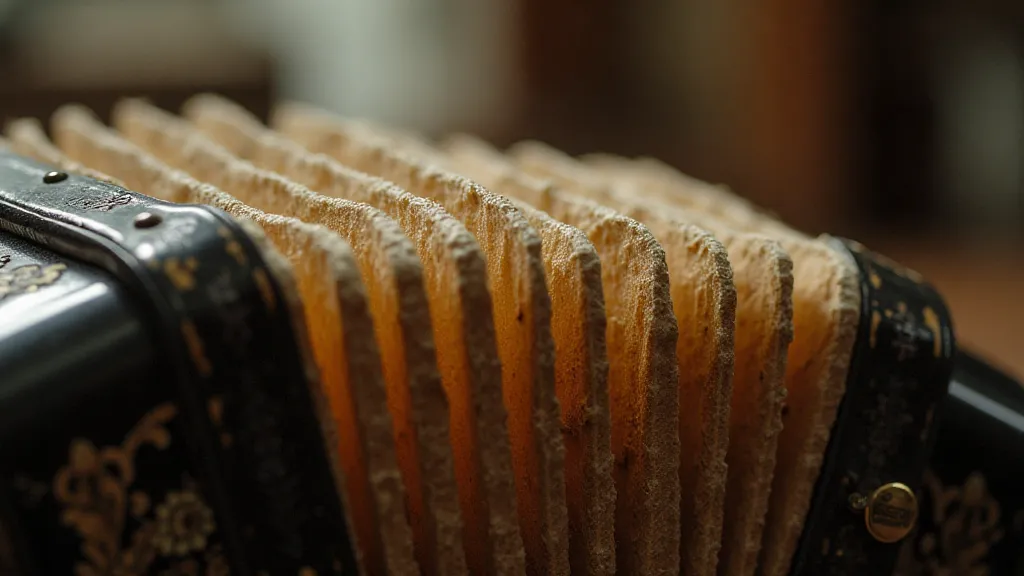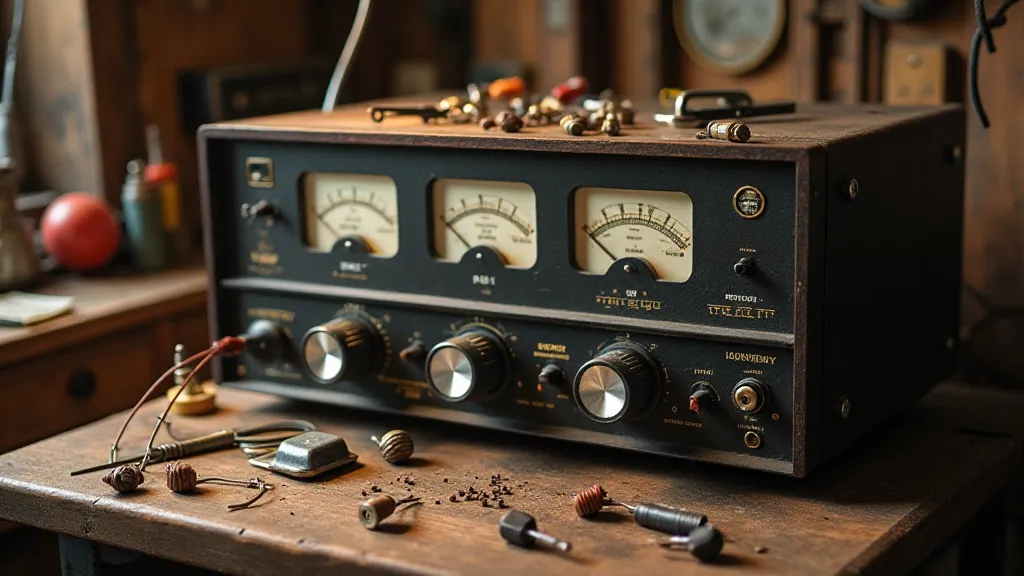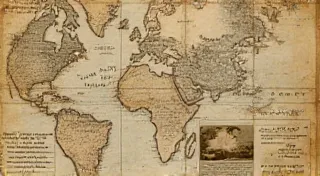Beyond Distance: The Art of Weak Signal Propagation
There's a certain melancholy beauty in the pursuit of a distant signal. It's a yearning, a whisper across continents, and a testament to the unseen forces that connect us. It's a pursuit that feels inextricably linked to another forgotten art form, one that shares a similar reliance on delicate mechanics and a patient understanding of resonance: the art of the antique accordion.
I first encountered accordions at a dusty antique shop in my grandfather’s town. He’s a ham radio operator, a quiet, thoughtful man who taught me the basics of radio communication. While he built impressive, powerful rigs, he always appreciated the *idea* of the signal - the fragility of it, the miracle that a human voice could travel thousands of miles carried on a wave. The accordions, with their bellows and intricately carved keys, held a similar weight. They were relics of a time when craftsmanship was paramount, when a musical instrument wasn’t just something to play, but a work of art to be cherished. The accordions seemed to hum with a history of celebrations and mournful melodies, each key a portal to a past era. Like the faintest signal on the radio, they demanded focused attention, a willingness to listen beyond the obvious.

The Propagation Puzzle: More Than Just Power
Many new hams believe that increasing transmit power is the key to reaching distant stations. While power certainly helps, it’s a blunt instrument. True distance communication, weak signal propagation, requires a far more nuanced understanding. It's about exploiting the anomalies, the quirks in the ionosphere, the subtle shifts in solar activity. It's about listening to the universe and learning its patterns. Achieving reliable long-distance communication isn't simply a matter of brute force; it requires a deep dive into the technical aspects of radio and a lot of patience. The rewards, however, are well worth the effort, offering a unique perspective on the workings of the world around us.
Consider the ionosphere, that vital layer of the atmosphere that reflects radio waves back to Earth. Its behavior is anything but predictable. Solar flares, geomagnetic storms, even the time of day can dramatically impact its reflectivity. Skip distance, the boundary between the direct signal and the reflected signal, dances across the globe, creating opportunities for communication that seem to defy logic. This is where the real challenge, and the real reward, lies. It’s a continuous learning process, demanding an ability to adapt and innovate to overcome the inevitable obstacles. Sometimes, those challenges can be frustrating, but they also offer valuable learning opportunities. Like a master craftsman, the experienced weak signal operator understands the materials and the process intimately.
Whispers of the Sun: Solar Activity and DX
Solar activity is the conductor of this ethereal orchestra. During periods of low solar activity, known as solar minimum, the ionosphere is less stable, and long-distance communication becomes considerably more difficult. High-frequency (HF) bands, the bread and butter of amateur radio, often experience very poor propagation. Conversely, during solar maximum, when the sun is highly active, the ionosphere is much more dynamic, creating opportunities for “sporadic-E” (Es) propagation – reflections from a dense layer of ionization – and “auroral propagation,” signals refracted by the aurora borealis and australis. These phenomena can open up unexpected paths for signals to travel, allowing communication across vast distances. Understanding these conditions is paramount to success. It requires a constant monitoring of solar weather reports and a willingness to experiment with different frequencies and modes.
The beauty of these unpredictable conditions isn’t just about making a contact; it’s about appreciating the complexity of the universe and our ability to tap into its forces. It echoes the meticulous craftsmanship of the accordion maker. They didn’t just assemble parts; they understood the acoustics, the mechanics, the resonant frequencies of each component, striving to create an instrument that could produce a beautiful, resonant sound. Many operators find themselves deeply involved in the technical side, often adapting open-source transceiver designs to suit their specific needs. It’s a testament to the ingenuity of the ham radio community and a source of continuous innovation - a process that reminds one of adapting open-source transceiver designs to better understand and leverage propagation characteristics.
Antenna Innovation: Crafting a Listening Post
Specialized antenna designs are crucial for weak signal propagation. Forget the simple dipole or ground plane; these are insufficient. We’re talking about things like vertical antennas with elaborate matching networks, loop antennas, and even incredibly small, specialized antennas like the “mosquito” or "WSPR” antenna, designed to extract every last bit of signal from the air. These aren’t just antennas; they’re finely tuned listening posts, crafted to pull in the faintest whispers. The challenge isn’t just about building something that works; it’s about optimizing it to achieve the highest possible sensitivity and efficiency. For many, the process of overcoming these obstacles in DIY radio is a great source of satisfaction – a challenge detailed in the patience of persistence needed to truly master the art.
Low-noise amplifiers (LNAs) are another key ingredient. They amplify the weak received signal while minimizing added noise, allowing you to hear signals that would otherwise be buried in the background. It’s like being able to isolate a single, perfectly tuned key on an accordion within a cacophony of noise. The ongoing development of these tools pushes the boundaries of what’s possible, much like the delicate workings of a finely restored musical instrument.
Modes of Operation: Digital Extraction
Digital modes like FT8 and WSPR are invaluable tools for weak signal communication. These modes use highly efficient encoding techniques to squeeze the maximum amount of information into a tiny bandwidth, making them remarkably resilient to noise and fading. WSPR (Weak Signal Propagation Reporter) is particularly useful. It transmits a coded signal that allows you to pinpoint your location and the propagation conditions, contributing to a global database of propagation data. It’s a collaborative effort, a collective attempt to understand the mysteries of the ionosphere. Like a restorer meticulously cleaning and repairing an antique accordion, each data point contributes to a clearer picture of the instrument's history and potential. Troubleshooting techniques for the audacious builder are often required to get these systems working optimally, pushing the boundaries of what's possible— a challenge that highlights whispers from the void.

The Emotional Connection: Beyond the Contact
The pursuit of weak signal propagation isn’t just about making contacts. It’s about the challenge, the learning, the connection to something larger than yourself. It’s about the thrill of pulling a signal from the void, a voice from across the ocean, a testament to the power of human ingenuity and the resilience of radio waves. It’s a quiet satisfaction, a feeling of accomplishment that transcends the mere exchange of call signs. The integration of software-defined radio (SDR) is increasingly common, offering a new dimension of flexibility and control for these intrepid operators. This blending of traditional techniques with modern technology is a captivating example of how far the hobby has evolved.
Thinking about it now, the quiet beauty of these long-distance contacts isn’t so different from the feeling of playing a beautifully restored antique accordion. The care and attention required to get it playing again, the feeling of the keys under your fingers, the sound resonating through the room – it’s a connection to history, to craftsmanship, to a world that values beauty and perseverance. Both activities, in their own way, are an exploration of boundaries, a reaching out beyond the immediate and the obvious. Both remind us that even the faintest signal, the most fragile instrument, can possess a remarkable power to connect us to something profound. This understanding of the technology and the passion for the art form truly exemplify the dedication of amateur radio enthusiasts.






